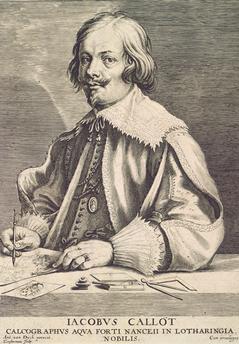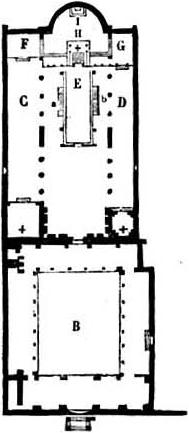|
Servulus Of Rome
Saint Servulus (or Servolo, died ) was a paralyzed beggar who spent all his time praying outside San Clemente al Laterano, Saint Clement's Church in Rome. His feast day is 23 December. ''Roman Martyrology'' The ''Roman Martyrology'' of 1916 has an entry under the Twenty-third Day of December, Monks of Ramsgate account The monks of St Augustine's Abbey, Ramsgate wrote in their ''Book of Saints'' (1921), Butler's account The hagiographer Alban Butler (1710–1773) wrote in his ''Lives of the Fathers, Martyrs, and Other Principal Saints'' under February 21, Notes Sources * * * {{DEFAULTSORT:Servulus, Saint Italian Roman Catholic saints 590 deaths ... [...More Info...] [...Related Items...] OR: [Wikipedia] [Google] [Baidu] |
Jacques Callot
Jacques Callot (; – 1635) was a baroque printmaker and draftsman from the Duchy of Lorraine (an independent state on the north-eastern border of France, southwestern border of Germany and overlapping the southern Netherlands). He is an important person in the development of the old master print. He made more than 1,400 etchings that chronicled the life of his period, featuring soldiers, clowns, drunkards, Gypsies, beggars, as well as court life. He also etched many religious and military images, and many prints featured extensive landscapes in their background. Life and training Callot was born and died in Nancy, the capital of Lorraine, now in France. He came from an important family (his father was master of ceremonies at the court of the Duke), and he often describes himself as having noble status in the inscriptions to his prints. At the age of fifteen he was apprenticed to a goldsmith, but soon afterward travelled to Rome where he learned engraving from an expatriat ... [...More Info...] [...Related Items...] OR: [Wikipedia] [Google] [Baidu] |
San Clemente Al Laterano
The Basilica of Saint Clement ( it, Basilica di San Clemente al Laterano) is a Latin Catholic minor basilica dedicated to Pope Clement I located in Rome, Italy. Archaeologically speaking, the structure is a three-tiered complex of buildings: (1) the present basilica built just before the year 1100 during the height of the Middle Ages; (2) beneath the present basilica is a 4th-century basilica that had been converted out of the home of a Roman nobleman, part of which had in the 1st century briefly served as an early church, and the basement of which had in the 2nd century briefly served as a mithraeum; (3) the home of the Roman nobleman had been built on the foundations of republican era villa and warehouse that had been destroyed in the Great Fire of AD 64. History This ancient church was transformed over the centuries from a private home that was the site of clandestine Christian worship in the 1st century to a grand public basilica by the 6th century, reflecting the emerging ... [...More Info...] [...Related Items...] OR: [Wikipedia] [Google] [Baidu] |
Roman Martyrology
The ''Roman Martyrology'' ( la, Martyrologium Romanum) is the official martyrology of the Catholic Church. Its use is obligatory in matters regarding the Roman Rite liturgy, but dioceses, countries and religious institutes may add duly approved appendices to it. It provides an extensive but not exhaustive list of the saints recognized by the Church. History In 1582, Pope Gregory XIII decreed a revision of the Julian calendar, creating a new system, now called, after him, the Gregorian calendar. The ''Roman Martyrology'' was first published in 1583. A second edition was published in the same year. The third edition, in 1584, was made obligatory wherever the Roman Rite was in use. The main source was the Martyrology of Usuard, completed by the "Dialogues" of Pope Gregory I and the works of some of the Fathers, and for the Greek saints by the catalogue known as the Menologion of Sirlet. Its origins can be traced back to the Martyrologium Hieronymianum, which was originally based on ... [...More Info...] [...Related Items...] OR: [Wikipedia] [Google] [Baidu] |
St Augustine's Abbey, Ramsgate
St Augustine's Abbey or Ramsgate Abbey is a former Benedictine abbey in Ramsgate. It was built in 1860 by Augustus Pugin and is a Grade II listed building. It was the first Benedictine monastery to be built in England since the Reformation. In 2010, the monks moved to St Augustine's Abbey in Chilworth, Surrey. The site is now owned by the Vincentian Congregation from Kerala, India. The church of St Augustine, across the road from the abbey site, belongs to the Archdiocese of Southwark and is a shrine of St Augustine of Canterbury. History Augustus Pugin had built his home, The Grange, in Ramsgate, and St Augustine's Church next door. He donated the church to the Catholic Diocese of Southwark before his death in 1852, and The Grange remained in private hands. In 1856, the Bishop of Southwark, Thomas Grant, invited the Subiaco Cassinese Congregation of the Benedictines to form a monastic community in Kent and take over the running of the church. The abbey was built acros ... [...More Info...] [...Related Items...] OR: [Wikipedia] [Google] [Baidu] |
Gregory The Great
Pope Gregory I ( la, Gregorius I; – 12 March 604), commonly known as Saint Gregory the Great, was the bishop of Rome from 3 September 590 to his death. He is known for instigating the first recorded large-scale mission from Rome, the Gregorian mission, to convert the then largely pagan Anglo-Saxons to Christianity. Gregory is also well known for his writings, which were more prolific than those of any of his predecessors as pope. The epithet Saint Gregory the Dialogist has been attached to him in Eastern Christianity because of his ''Dialogues''. English translations of Eastern texts sometimes list him as Gregory "Dialogos", or the Anglo-Latinate equivalent "Dialogus". A Roman senator's son and himself the prefect of Rome at 30, Gregory lived in a monastery he established on his family estate before becoming a papal ambassador and then pope. Although he was the first pope from a monastic background, his prior political experiences may have helped him to be a talented administ ... [...More Info...] [...Related Items...] OR: [Wikipedia] [Google] [Baidu] |
Alban Butler
Alban Butler (13 October 171015 May 1773) was an English Roman Catholic priest and hagiographer. Biography Alban Butler was born in 1710, at Appletree, Aston le Walls, Northamptonshire, the second son of Simon Butler, Esq. His father died when he was young and he was sent to the Lancashire boarding school ran by Dame Alice. He went on to a Catholic further education at the English College, Douai, in France. In 1735 Butler was ordained a priest. At Douai, he was appointed professor of philosophy, and later professor of theology. It was at Douai that he began his principal work ''The Lives of the Fathers, Martyrs and Other Principal Saints''. He also prepared material for Richard Challoner's ''Memoirs of Missionary Priests'', a work on the martyrs of the reign of Elizabeth. In 1745, Butler came to the attention of the Duke of Cumberland, younger son of King George II, for his devotion to the wounded English soldiers during the defeat at the Battle of Fontenoy. Around 1746, Butle ... [...More Info...] [...Related Items...] OR: [Wikipedia] [Google] [Baidu] |
Italian Roman Catholic Saints
Italian(s) may refer to: * Anything of, from, or related to the people of Italy over the centuries ** Italians, an ethnic group or simply a citizen of the Italian Republic or Italian Kingdom ** Italian language, a Romance language *** Regional Italian, regional variants of the Italian language ** Languages of Italy, languages and dialects spoken in Italy ** Italian culture, cultural features of Italy ** Italian cuisine, traditional foods ** Folklore of Italy, the folklore and urban legends of Italy ** Mythology of Italy, traditional religion and beliefs Other uses * Italian dressing, a vinaigrette-type salad dressing or marinade * Italian or Italian-A, alternative names for the Ping-Pong virus, an extinct computer virus See also * * * Italia (other) * Italic (other) * Italo (other) * The Italian (other) * Italian people (other) Italian people may refer to: * in terms of ethnicity: all ethnic Italians, in and outside of Italy * in ... [...More Info...] [...Related Items...] OR: [Wikipedia] [Google] [Baidu] |


